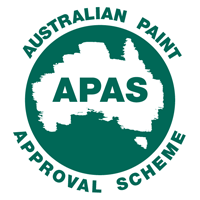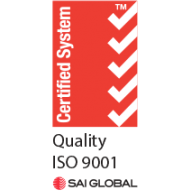Structural steel is found in abundance in industrial facilities and infrastructure and protection is critical for its existence.
It is estimated that corrosion costs an average of 4.35% of global gross domestic product. For Australia’s GDP this equates to approximately $78 billion per annum being spent on remediating assets affected by corrosion. (https://membership.corrosion.com.au/blog/cost-of-corrosion-part-one/)
Finding out proper protective coating systems for asset protection can be quite a challenge for architectural and industrial facilities and infrastructure. It is not always easy to decide on an industrial coating that not only keeps the infrastructure well protected, but also looks after its aesthetics. When it comes to structural steel, the right industrial coating can protect it from damage caused by salts, humidity, and pollutants. It is important that life-cycle cost is taken into consideration. An extra few percent spent initially can mean that recoat time can be spun out for an extra twenty or thirty years or more, meaning a lot of savings in not only cost of recoat but cost of disruption. Mentioned below are some of the most commonly used steel coatings.
Zinc Primers:
A zinc-based coating is the most common way to prime steel structures in architectural and industrial settings. Zinc rich epoxies contain a high zinc dust percentage and provide cathodic protection. Zinc phosphate-based epoxies work more as a barrier coating. A&I Coatings have both solvent and water borne zinc phosphate primers, but only solvent borne zinc rich primers. Preparation for a zinc based primer must be carefully paid attention to.
Epoxy Primers and Build Coatings:
Mostly the zinc primer is overcoated with an epoxy build coat. These coatings act as a barrier in architectural, industrial and marine applications. Specifications for different environments can be found on the A&I website, and normally involve variation in film thickness of the barrier coat.
Epoxies also offer extraordinary adhesion to steel and many epoxies have good surface tolerance, which means that they can adhere well to different surfaces where good surface preparation is not possible. Epoxy coatings are unique for certain applications because they can be formulated to cure on damp surfaces or underwater.
A&I has solvent borne, water borne and solvent free epoxies.
Polyurethane Topcoats:
This type of coating is generally used on structural steel as topcoats over epoxy primers. These coatings are highly preferred in industrial settings because of their good UV resistance. Though polyurethanes are best suited for exterior applications, they can also be used interior for aesthetic purpose. Aromatic and aliphatic are the two major types of polyurethanes. Aliphatic polyurethanes are superior in terms of UV resistance, and are used typically in exterior applications. On the other hand, aromatic polyurethanes offer excellent abrasion resistance because of their extreme toughness. However, their colour stability is not good enough, and may change colour under exposure to UV light.
Fluoropolymer Topcoats:
Fluoropolymer, or FEVE, based coatings are used where ultimate durability, including retention of colour and gloss is called for. While initially more expensive, life cycle cost is greatly reduced due to the much greater time needed between recoating. A fluoropolymer topcoat also plays an important role in keeping moisture and salt ions out of the intermediate coat and the primer.
If you still have doubts about the best steel coating options, please contact us at A&I Coatings. We have a wide range of steel coatings suitable for different industrial applications, and a wide distribution network.





